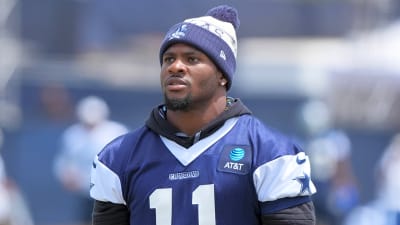
Capcom, a titan of the gaming industry known for classics ranging from Street Fighter to Resident Evil, finds itself in a curious conundrum with its latest title, Monster Hunter Wilds. Despite the franchise’s reputation, the recent entry appears to be stumbling, struggling to maintain the momentum of its impressive opening sales. For fans and the industry, it raises a pressing question: what exactly is happening with Monster Hunter Wilds?
A Promising Start That Fizzled Fast
When Monster Hunter Wilds debuted in February 2025, it was a blockbuster. The initial 8 million units sold in just three days made it Capcom’s fastest-selling title ever. By the first quarter, the game had breezed past 10 million copies, swiftly climbing to become the U.S.’s best-selling game of 2025. For a moment, it seemed like they had done everything right.
But by June, the gleaming sales armor began to crack. Capcom’s latest quarterly earnings revealed a sharp slowdown, with only 477,000 units sold in Q2. Surprisingly, an older entry in the series, Monster Hunter Rise, came close to outselling Wilds in the same period, moving 389,000 copies despite being four years old. What’s more, Wilds barely eked into their top 10 sales for the quarter, trailing behind evergreen titles like Devil May Cry 5 and Resident Evil Village. Numbers like these don’t scream success for a tentpole release from a massively popular franchise.
What Went Wrong with Monster Hunter Wilds?
The dip in sales can’t be blamed on one single factor; rather, it’s a bunch of interconnected issues. Here’s a closer look at what’s dragging down Monster Hunter Wilds.
1. Endgame Woes
Capcom has been lauded for making Monster Hunter a social, long-play experience for dedicated hunters. However, Wilds appears to have fumbled where it matters most—in its endgame content. Longtime fans have described the options as “half-baked” compared to previous entries, leaving dedicated players without enough incentive to keep grinding.
Their immediate response? Moving the next batch of endgame content up by nearly two months. Initially planned for September, the update will now launch in mid-August, in a bid to captivate those still lingering in Wilds’ lobbies. The new content promises more challenging quests, revamped rewards, and tweaks to combat balance. While it’s a notable olive branch, it might be a classic case of “too little, too late.”
2. Performance Problems on PC
Another issue is the game’s lack of optimization for PC, a platform where Monster Hunter World previously thrived. Since launch, it has been plagued by significant performance bugs, with stuttering, crashes, and inconsistent frame rates tarnishing the experience. Unsurprisingly, recent reviews on Steam have turned “Overwhelmingly Negative.”
Capcom has rolled out patches to address these problems, but player frustration persists. Performance problems this severe can be an inexcusable flaw, especially for modern AAA titles. It’s not hard to see why some players might return to older, still-polished entries like Monster Hunter Rise rather than soldier on with Wilds.
3. Shifting Fan Expectations
The Monster Hunter franchise has a dedicated fanbase, many of whom have grown accustomed to certain standards. These players expect not just innovation but also depth and polish equal to, if not greater than, previous titles. With Wilds, they may have underestimated just how strongly players would react to any perceived lack of quality or attention to detail.
Can Capcom Recover?
While the situation isn’t ideal, it’s far from a death knell for Capcom or the Monster Hunter franchise. The company has already taken action to improve the situation. Besides the accelerated content update, they’re leaning heavily on their reliable catalog to stabilize their bottom line. Series like Resident Evil and Devil May Cry continue to see robust sales and provide a financial cushion.
The more immediate question is whether Wilds can rebound from the hole it’s found itself in. To regain trust, Capcom needs to do more than release a few content updates; it has to listen to its community. Addressing performance issues quickly and transparently (with measurable improvements) will be key. Just as important, future DLC drops need to over-deliver to win back players who have moved on. A sluggish pace or half-measures won’t cut it in a market with no shortage of high-quality RPGs.
Lessons from Monster Hunter Rise
Rise’s continued success offers a roadmap for how Capcom could approach Wilds’ revival. The 2021 title started strong and maintained its momentum with thoughtful updates and consistent community engagement. Even four years after its release, Rise is pulling respectable numbers and remains a fan favorite.
Maybe the silver lining is this potential for a resurgence. If Wilds can take lessons from Rise, rebuild goodwill, and refine its overall package, it might find its way to long-term success. It’s worth remembering that many live-service games (think No Man’s Sky or Final Fantasy XIV) had rough beginnings but ultimately transformed into beloved hits.
Capcom’s Next Move
Capcom’s track record as an industry heavyweight means the stakes are high, but the chances for redemption are equally significant. Fans adore Monster Hunter for good reasons, and those reasons are still present in Wilds, even if frustrations currently overshadow them.
The road ahead might be bumpy, but if there’s one thing we know, it’s that they thrive on comebacks. Whether it’s a new title update or a bold new feature, fans will be watching closely to see if the company can bring Monster Hunter Wilds out of the shadows. For Capcom, this isn’t just a challenge; it’s an opportunity to prove why it remains one of the most legendary developers in gaming history.
More must-reads:
- Five under-the-radar national title contenders in college football
- Giants potentially fleece Mets in trade for rental reliever
- The 'National League MVPs' quiz
Breaking News
Trending News
Customize Your Newsletter
 +
+
Get the latest news and rumors, customized to your favorite sports and teams. Emailed daily. Always free!








